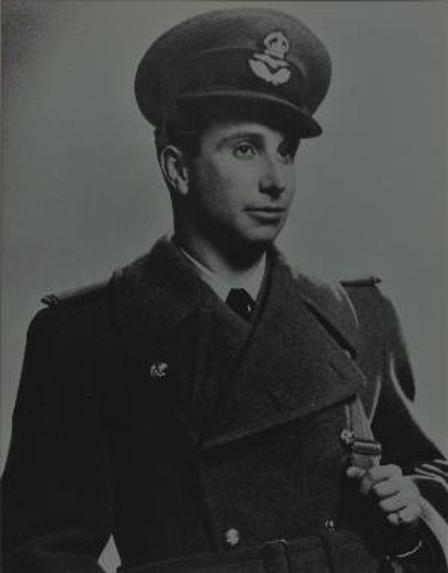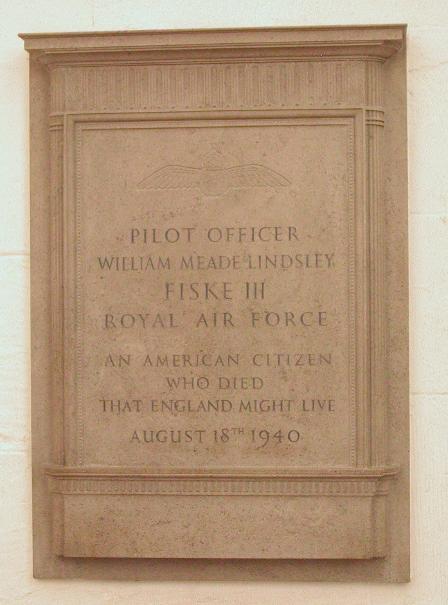Billy Fiske

Fiske was born on 4 June 1911, a descendant of a wealthy banking family who had settled in America after leaving Suffolk in the seventeenth century. After spending his youth in Chicago, he left for Europe and studied Economics and History at Trinity College, Cambridge, before graduating in 1928. A talented sportsman, he returned to America and successfully led the bobsled team in the Winter Olympics of 1928 and 1932. Despite his importance to team USA, Fiske refused to travel to the 1936 Olympics, hosted in Bavaria. He never publicly declared his reasons, but his friend Irving Jaffee (double gold-winning speed skater at Lake Placid in 1932), claimed Fiske objected to the poor treatment of Jews1
This perhaps indicates why Billy travelled back to Britain upon the outbreak of the Second World War.
Fiske recorded in his diary:
I believe I can lay claim to be the first US citizen to join the Royal Air Force (RAF) in England after the outbreak of hostilities.
Fiske had made contacts in his banking career, so it was not difficult for him to secure an interview with the Royal Air Force. After training at Flying School, RAF Brize Norton, the newly appointed Acting Pilot Officer Billy Fiske joined No.601 (City of London) Squadron.

Between 20 July and 16 August 1940, Fiske flew 42 operational sorties in the Hawker Hurricane. Fiske claimed two aircraft shot down and another two damaged, including forcing a German bomber to fly directly into a barrage balloon on 15 August 1940.
On 16 August, No.601 Squadron were scrambled to intercept an enemy raid over RAF Tangmere. Fiske's Hurricane was hit by an enemy gunner and he was forced to perform a wheels-up landing. Tragically the aircraft exploded upon hitting the ground, but due to the actions of the ground crew, Fiske was removed from the aircraft, having suffered severe burns to his body. Pilot Officer Billy Fiske died in hospital on 17 August 1940, at the age of 29.
Fiske lost his life during some of the fiercest fighting in the Battle of Britain. His funeral at Boxgrove Priory near RAF Tangmere, was a widely publicised event, attracting attention from both British and American news and media publications.
After the Battle of Britain, Churchill showed concern about America's intentions in the Second World War. In a telegram sent to Roosevelt in December 1940, Churchill stated:
Remember, Mr President, we do not know what you have in mind, or exactly what the United States is going to do, and we are fighting for our lives.
Communicating through the Ministry of Information, Churchill emphasised to the Americans that their fellow countrymen were already fighting against Nazi Germany and one individual had even died for the cause. The intention was to popularise Fiske's story in order to silence some of the non-interventionist voices in the neutral United States of America and solicit support for the British war effort.
In July 1941, three months after the Lend-Lease Act was agreed, a plaque to Fiske was unveiled in St Paul's Cathedral, with the caption reading: 'An American citizen who died that Britain might live.'
A British Pathé film shows the funeral of Pilot Officer Billy Fiske at Boxgrove Priory, near RAF Tangmere in Sussex. RAF service personnel marched slowly through the church grounds. The coffin is draped in both the American and Union Jack flags to demonstrate cooperation between the two nations signified by Fiske's sacrifice.
1. The fast life of Billy Fiske | Sport | The Guardian
2. Park, Keith: 'Turning points in the Battle of Britain': The report of RAF Air Vice-Marshal Keith Park (National Archives)